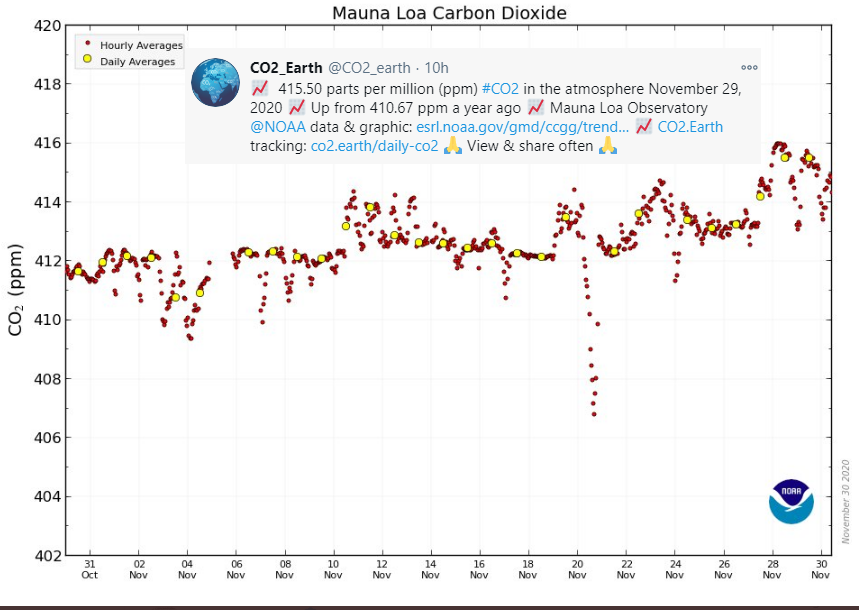--except CO2 goes rocketing up
The data comes originally from the Mauna Loa station and is unusual in the world of Climate Change, in that it is unfiltered. What you see is what they discovered and has not been refined in any way, probably.
The reading from a couple of days ago (November 29) is quite remarkable at 415.5 ppm (parts per million) because the level was just 410.67 ppm a year ago. This is roughly equivalent to the increase in CO2 ppm between July 2016 and September 2019 (more than three years).


In other words, it's hot but there has been no sustained increase in temperatures for two decades or more. The only exception to this was a short period two or three years ago, when even I was starting to worry about Global Warming.
One striking thing about the Mauna Loa graphs (above) is that CO2 concentrations appear to have increased at the same sort of rate between 1955 (the baseline) and 1980 as they have in recent years.
Climatologists seem to be mainly concerned with CO2 emissions (though to be fair they also mention deforestation and other negative environmental factors). But as well as negatives there are positives. A warmer, wetter world resulting from high atmospheric carbon levels, will also create a more favourable environment for carbon using plants and microbes.
It would be reasonable for people like the environment correspondent of the BBC to cry alarm about the apparently run away increase in atmospheric CO2 but this is not what is happening at the BBC. Today's story from the Beeb is that thanks to the election of the more environmentally conscious Joe Biden as US President along with promises by China to reduce carbon emissions, a group called Climate Action Tracker has worked out that the rise in temperature by the end of the century might only be 2.1 degrees Centigrade.
That seems like a lot to me, considering that so far the total warming since the beginning of the industrial age is one degree!
Context is, of course, everything. As little time ago as 2013 the Guardian ran a story saying a new climate model predicted that Earth would warm 4ºC by 2100. In November 2018 Reuters reported that Global temperatures were on course to rise by 3-5ºC this century.
The NASA graph comes from https://climate.nasa.gov/faq/21/why-does-the-temperature-record-shown-on-your-vital-signs-page-begin-at-1880/
You can find the Mauna Loa data at https://www.co2.earth/
Guardian article from December 2013: Planet will warm 4C by 2100
Reuters Global temperatures on track for 3-5 degrees rise Reuters has removed this link but you can find the information above right (on this web page).